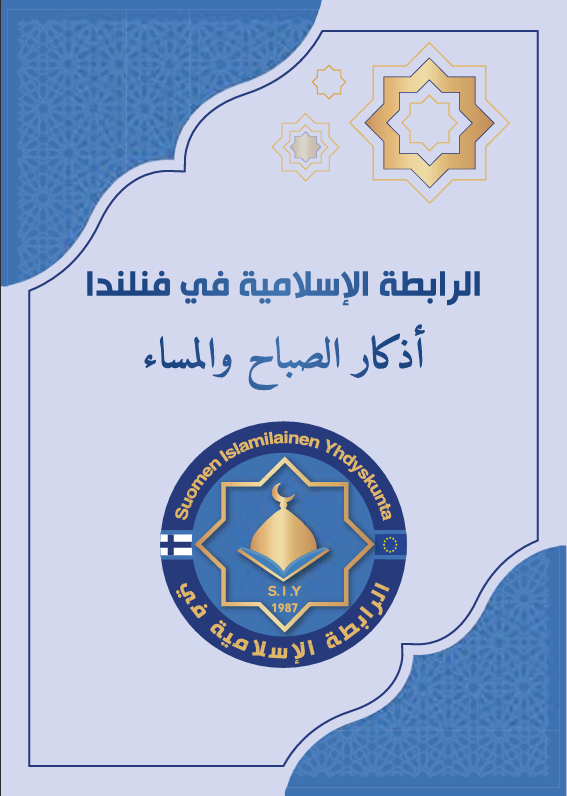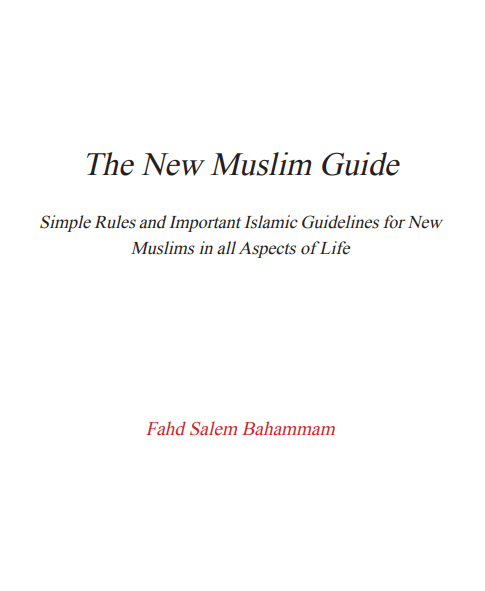Book Library
Morning and Evening Supplications
Rabita
Morning and evening supplications (Adhkar As-Sabah wa Al-Masaa) are a collection of remembrances (dhikr), prayers, and Quranic verses that Muslims recite daily after Fajr (dawn) and Asr/Maghrib (afternoon/evening). These supplications provide spiritual protection, blessings, and peace of mind, seeking Allah’s guidance, forgiveness, and mercy.
The New Muslim Guide
Fahd Salem Bahammam
Statistical studies consistently indicate that Islam is the fastest growing religion in the world, both in terms of the number of people who embrace it every day and the manner of their conviction, as well as the way Islam changes their lives.
The reason for this is that Islam is obviously God’s eternal religion which is compatible with the intellect, conscience, the spirit and the dictates of pure human nature. This is, of course, also due to the huge efforts made by Islamic centres and dedicated individuals specializing in inviting non-Muslims to Islam in all parts of the world, utilising various modern methods and techniques. However, most of these efforts mainly focus on inviting people to Islam but without providing them with any reading material with clear objectives for new Muslims to guide them on the journey of guidance, which they have started following their recitation of the shahaadah (testimony of faith), and still need to learn more about Islamic teachings in all aspects of life so they can translate them into reality.
Daar Samaa’ Al-Kutub has the honour to introduce The New Muslim Guide,which is one of a number of quality products, combining authentic knowledge and professional production and is geared towards new Muslims in all parts of the world in all known living languages. The present book is the very foundation upon which all accompanying products are based, including the Internet, social networking services, educational video clips and interactive mobile programmes, which collectively aim to serve new Muslims in all parts of the world.
The Sealed Nectar
Biography of Prophet Muhammad (SAAS)
Saif-ur-Rahman al-Mubarakpuri
Chapter 3: The Religions of the Arabs
Most Arabs had followed Ismail’s (AS) call and acknowledged the religion of his father, Abraham (AS). They worshipped Allah (SWT), recognized His Oneness, and followed His religion for a long time until they forgot some of what they had been reminded of. However, they held on to the basics like monotheism and many other concepts of Abraham’s (AS) religion. This continued until Amr bin Luhai, the chief of the Khuza’a tribe, returned from his journey to Syria. He was known for his righteousness, charity, conviction, and religious devotion. His tribe members loved him unconditionally and were obedient to him. In Syria, he saw people worshipping idols. He accepted this phenomenon and believed it to be pious since Syria was the land of messengers and holy scriptures. He brought back an idol (Hubal) and placed it in the middle of the Kaaba, inviting people to worship it. Idol worship quickly spread throughout Mecca and then Hijaz, as the Meccans were the custodians of not only the Sacred House but also the entire Haram. Numerous idols with different names were brought to the area.
An idol named Manat was worshipped in a place called al-Mushallal near Qadid on the Red Sea coast. Another idol, al-Lat, was worshipped in Ta’if, and a third, al-’Uzza, in the valley of Nakhlah, and so on. Polytheism prevailed, and the number of idols increased throughout Hijaz. Assisted by the jinn (spirits), Amr bin Luhai unearthed the idols of Noah’s people (a jinn told him that the idols Wadd, Suwa, Yaguth, Ya’uk, and Nasr were buried in Jeddah) and brought them to Tihama. During the pilgrimage season, idols were distributed among the tribes to take home. Each tribe and household had its own idols, and the Sacred House was filled with them to the brim.
When the Prophet (SAAS) conquered Mecca, 360 idols were found around the Kaaba. He smashed them, cleared them away, and burned them to ashes.
Understanding the Muslim Mind
From time to time, a book is published that profoundly changes our understanding of the world, one person at a time. Understanding the Muslim Mind is one such book. Dr. Hassan Hathout begins with a simple observation—drawn from a lifetime of dual-culture experience (an Egyptian-born physician who lived in the UK and then the US for over a decade)—that “Islam is often known by what it is not.”
This encyclopedic personality (doctor, thinker, speaker, poet) takes the reader on a genuine tour of Islam. Along the way, he provides a clear and exciting “anatomy” of Islamic life and offers sharp clarity with an internal guide. He reveals the soul behind religious practices and texts—the Ultimate Reason, the rationality of God.
This reading experience is enlightening and thought-provoking for non-Muslims and those who, as Dr. Hathout aptly calls them, follow the Judeo-Christian-Islamic tradition as a whole. For Muslims, this book reaffirms their faith and offers important and timely answers to the dilemmas of modern life in the new millennium.
Understanding the Muslim Mind addresses and answers questions relevant to our time from an Islamic perspective. In this wise, warm, and inspiring work, Dr. Hathout speaks to all of humanity in an age of selfishness, “microtheism,” and godlessness. He presents a call for hope, suggesting that if even a “minimal critical mass” reaches understanding and cooperation, true change would be possible.
Dr. Hathout emphasizes that knowing the truth of things is a fundamental human right. After understanding the true nature of Islam, the world can truly flourish and reach its full potential.
What Every Christian Should Know About Islam
Few books on Islam address the challenges faced by someone approaching Islam from a Christian perspective. The author of this book has also noticed a tendency among some Muslims to forget the shared background of the Abrahamic religions—Judaism, Christianity, and Islam. They refer to non-Muslims as kuffar, or unbelievers.
This book contains four different sections: Christianity and Islam (highlighting certain theological differences and similarities); an explanation of Islam’s spiritual teachings; an explanation of Islam’s religious obligations; and answers to questions that non-Muslims often ask about Islam. Religions are often unjustly judged based on the actions of a small, uninformed extremist group.
The author has written this book on Islam and its practices with humility, aiming to challenge some of the misconceptions about Islam.
Ruqaiyyah Waris Maqsood holds a degree in Theology from Hull University, obtained in 1963. She worked for a long time in senior positions in religious education in state schools in England until her retirement in 1996. She reverted to Islam in 1986 and lectures and writes about Islam.
Understanding the Qur’an
The development of the sciences and disciplines related to understanding the Qur’an, known as ‘ulum al-Qur’an, began during the Prophet’s lifetime (peace and blessings be upon him). Since then, numerous books on this subject have been written in many of the languages used by Muslims. However, until now, no book on this topic has been published in Finnish. The author of this book has done us a great service by compiling the first book in English, which has now been translated into Finnish, thus filling a significant gap. The average Finnish reader, who has not been able to read Arabic texts like al-Itqan, has had no tools to help understand the Qur’an.
This book now provides valuable assistance in this regard. It is precise, concise, yet very comprehensive. It covers traditional topics such as the meaning of revelations, history, and transmission of the text, asbab al-nuzul (occasions of revelation), exegesis, etc., as well as more recent developments, such as Qur’anic recordings, the views of Oriental linguists, translations, etc. The final chapter contains practical information that will assist in reading and studying the Holy Book of Islam.
The author, Ahmad von Denffer, was born in Germany in 1949. He studied Islamic Studies and Social Anthropology at the University of Mainz. He joined the Islamic Foundation as a researcher in 1978. His publications include A Bibliography of Literature on Hadith in European Languages; a German translation of Nawawi’s Forty Hadith; A Day with the Prophet, both in German and English; and Islam for Children.






